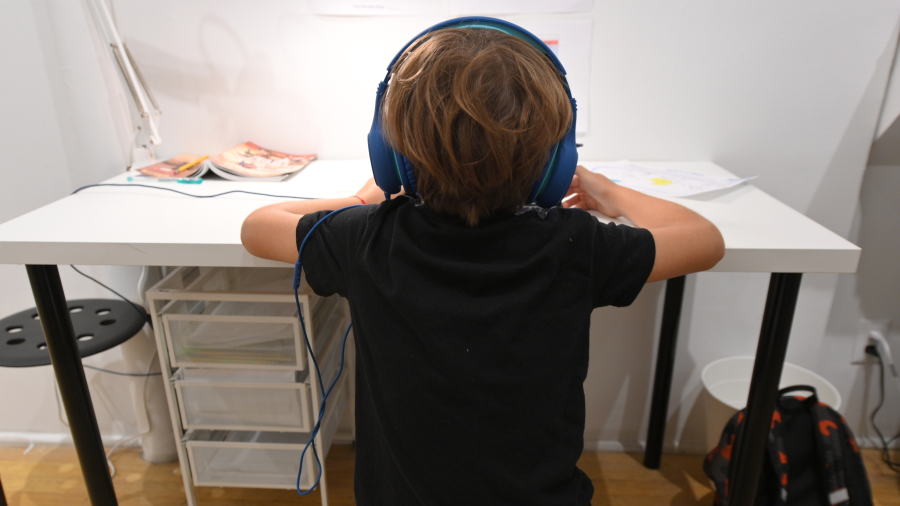Teachers reevaluate remote learning amid the omicron wave

There was a point last fall when school districts across the country were poised to finally, fully return to in-person instruction.
But as omicron cases surged among students and school staff, many of those plans had to change. Some districts decided to remain open. And, in others, teachers are bouncing between in-person and virtual instruction.
For some of those instructors, virtual classes are an easier lift now compared to the start of the pandemic. But even as they struggled, some teachers have realized unexpected benefits.
For example, Peter Tresnan, a middle school art teacher in New York City, found that remote learning improved attendance.
“It wasn’t uncommon for a kid to trek an hour and a half to school every single day,” he said. “And so when you had remote learning, suddenly these kids could go to school anywhere in the city, and it’s accessible.”
He said one student would often miss two days of school per week because she had to take one ferry to the southern tip of Manhattan and then a second one uptown.
“It was awful. Remote learning made school accessible to her,” Tresnan said.
According to a survey from the Clayton Christensen Institute, 64% of teachers said attendance became a challenge when COVID cases surged.
But many teachers found ways to make remote learning work for their students and for themselves.
“They took advantage of the technology to make it so that students didn’t have to learn at the same time with the teacher guiding the instruction,” said Thomas Arnett, a senior education researcher at the institute.
Eighty-two percent of the 600 teachers surveyed said they preferred to use online programs to track students’ progress.
And for Fayne Winter, a teacher based in upstate New York, Zoom’s breakout rooms — in which she divides her students into smaller groups — have become a key part of the teaching process.
“Because not everybody has to be on the same page, and you can get, meet students where they are. So that works in the classroom as well as remote,” she said.
But, she added that remote learning is still difficult.
“Sometimes it’s just getting certain students to come to class is to log on to Zoom. For a myriad of reasons, some of our students just don’t have internet at home.”
Winter’s district is providing Wi-Fi hot spots to students who need them to help them stay connected.
But many teachers have a hard time going back and forth between in-person and remote.
“We need time to prepare those online lessons, and, like, it’s different on how you would prepare a lesson as if you were in the classroom,” said Teneshia Moore, who teaches middle school in Michigan.
Moore said her school district took advantage of federal money through the Elementary and Secondary School Emergency Relief program to equip teachers and students with laptops.
According to the Christensen Institute’s survey, over 60% of teachers say their district is using ESSER funds to help teachers and students stay connected.

Related links: More insight from Kimberly Adams
You can read more from the Christensen Institute’s survey, which includes stories from teachers who talk about other challenges they’re facing right now, like supporting students’ social and emotional needs and managing in-class behavior.
CNN has a story about nationwide teacher and substitute shortages, which have been exacerbated by the highly transmissible omicron variant of the virus. In some communities, when substitute teachers also get sick and need a backup, districts have been asking alumni and parents to step in to help, according to CNN.
The future of this podcast starts with you.
Every day, the “Marketplace Tech” team demystifies the digital economy with stories that explore more than just Big Tech. We’re committed to covering topics that matter to you and the world around us, diving deep into how technology intersects with climate change, inequity, and disinformation.
As part of a nonprofit newsroom, we’re counting on listeners like you to keep this public service paywall-free and available to all.
Support “Marketplace Tech” in any amount today and become a partner in our mission.


















